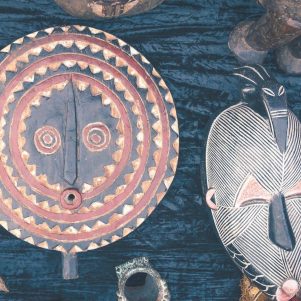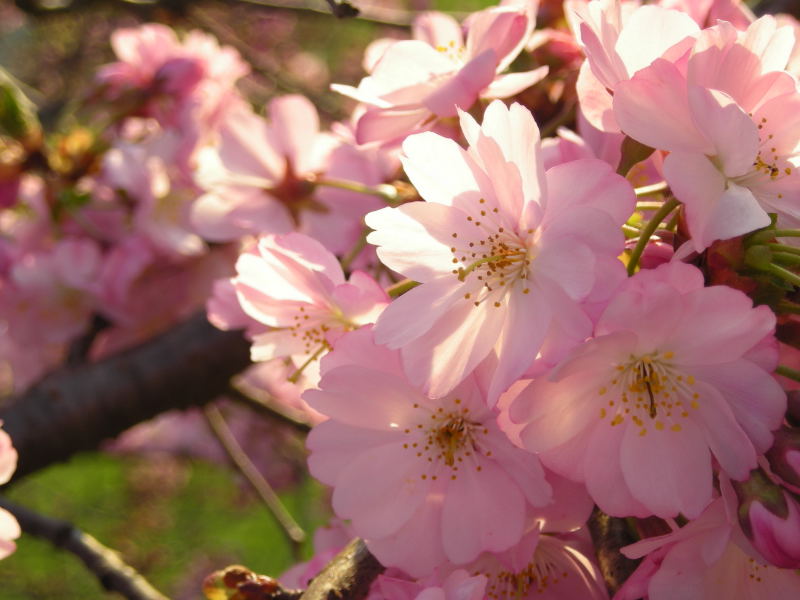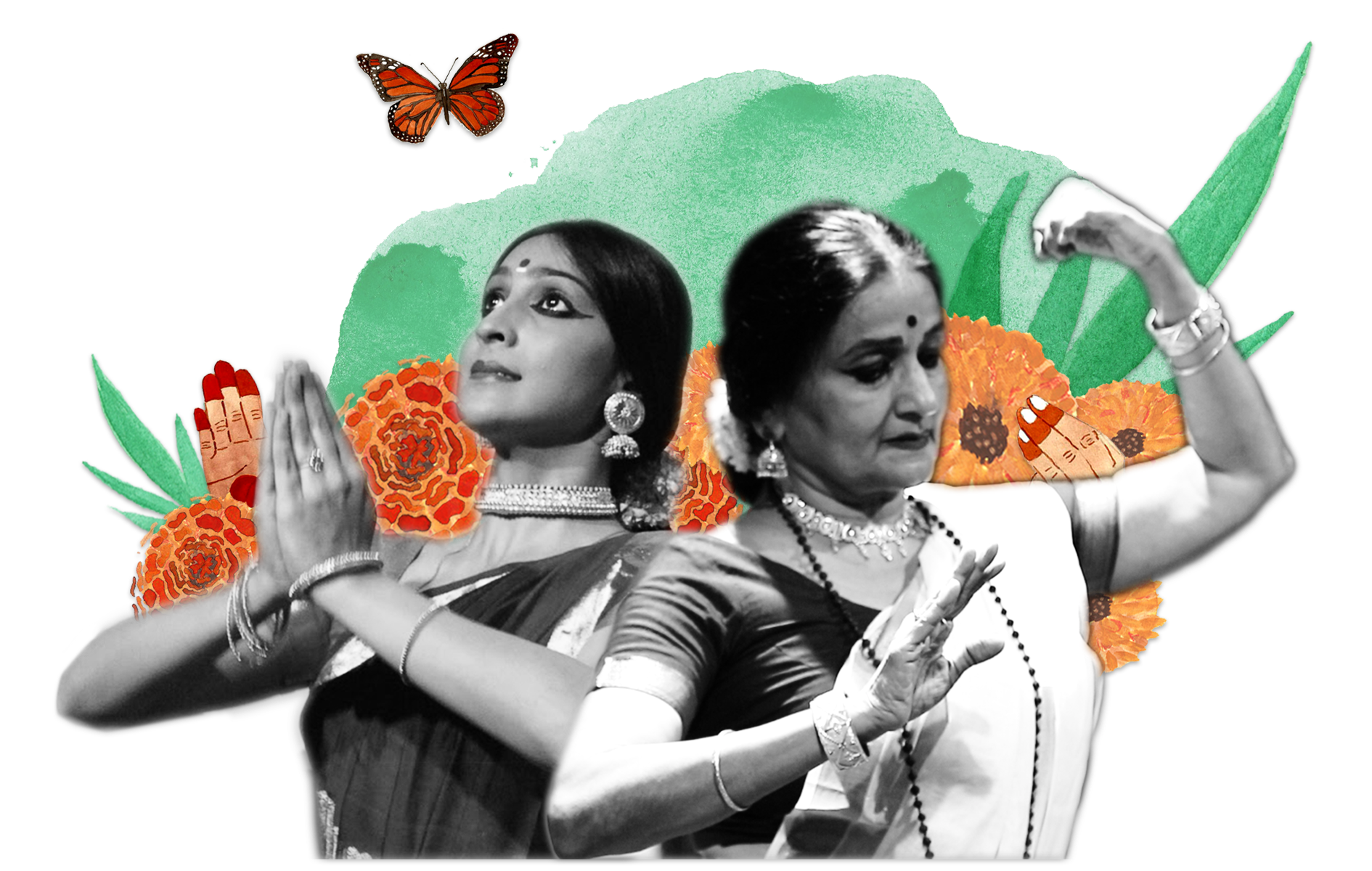The Mask, Unmasked
Article By Archana Samarth
 Life is a mystery and in mysterious ways, invites us to unravel it . The Truth it guards so protectively is expressed in myriad symbolic forms, some of which have survived over centuries, civilizations, and cultures. For one who is on a philosophical adventure of seeking wisdom, these symbolic forms are a bridge to the hidden Truth, or at least to some aspect of it. One such intriguing form that literally and figuratively conceals the mystery that is man, is a mask.
Life is a mystery and in mysterious ways, invites us to unravel it . The Truth it guards so protectively is expressed in myriad symbolic forms, some of which have survived over centuries, civilizations, and cultures. For one who is on a philosophical adventure of seeking wisdom, these symbolic forms are a bridge to the hidden Truth, or at least to some aspect of it. One such intriguing form that literally and figuratively conceals the mystery that is man, is a mask.
Masks have been prevalent across cultures for thousands of years. The Israel Museum in Jerusalem is said to host the oldest mask dating back to the Pre-pottery, Neolithic age, 9000 years ago1. The oldest stone mask, it is postulated, was used in cults or in magic rituals. Traditions across the world suggest that masks have been used in many contexts, varying from religious and cultural to therapeutic and educational. A mask by definition, is an object that covers, conceals or hides. This highlights what seems to be a contradiction: If man, intrigued by the mysteries surrounding him sought to answer the question who am I, why was mask- making such a prevalent tradition across cultures? Why was the need to find forms to conceal oneself so widespread, when there has always been an interest in wanting to know and understand one’s true nature? Perhaps, the mask is an enigma that reveals more than it hides.
Man has always been absorbed by the mystery of Life and Death.2Native cultures across the globe have been known to explore this relationship between the two worlds through rituals and ceremonies wherein masks have played an important role. These ceremonies were performed to please the spirits, seek blessing for the tribe or to evoke some aspect of the divine qualities, to remind man of his true identity. For example, the Kwakwaka’wakw, or natives of Northwest coast of the Pacific, make sun -masks to honour the Sun which is worshipped as the creator and source of life. Some natives of Papua New Guinea wear masks during a dance that celebrates the circle of life- embracing new life and also acknowledging death- perhaps as a way of education that life and death are continuous, aspects of one life, and that there is an ongoing relationship between the living and the deceased.
.In the Egyptian culture where masks have been known to be prevalent since the 1st Century CE, there were essentially two types of masks: death masks and ritual masks.3 The former, also known as funerary masks, are made to resemble the deceased as a way of honouring them and also as a way to connect with the spirit- world. . The death mask, allowed the soul to recognize the body so that it could return to it, waiting to be escorted by the Egyptian God Anubis to the trial that would allow them to pass into the spiritual realm . These masks were also believed to keep malevolent spirits away. The well-known mask of the pharaoh Tutankhamen, made in gold and decorated with semi-precious stones is a burial mask, now housed in the Egyptian Museum in Cairo.
The ritual masks on the other hand, as the name suggests, were worn during rituals, by the priest. Unlike the death masks, these masks were made to resemble animal heads and heads of gods and goddesses of ancient Egypt. The mask with the head of a jackal for example, represented Anubis, the God of Death and was worn during funeral ceremonies. Priests who wore a mask with a god’s head represented that god and were considered to be conveying his will.
The wearing of masks in the Balinese tradition for example, is a sacred task. It is said that the dancers and performers usually perform purification rituals before they begin. By wearing the mask and by performing the rituals, they are said to represent divine messengers who bring words from the Gods, or from the ancestors. Ancient philosophical doctrines speak about the dual nature of man- the earthly visible form that we are familiar with, and our spiritual nature which is masked by our material form and the needs, desires and conditioning that characterise it. The need to bridge these two worlds, the earthly and the spiritual, and also the external world of expression and man’s inner world, is affirmed by the use of masks which were employed as a tool to know and experience some aspects of the unknown. For example, “mask” in Latin is persona or false face. In current times, we are likely to interpret this as pretending to be someone who we are not.
However, the rituals mentioned above are perhaps a way of reminding us of this dual nature and inviting us to look within for our own divine nature. The Varjra dance of Tibet (today practiced as “Cham”)4 is performed in a monastery for three days by monks. Masked, and in deep meditation, the monks celebrate Emperor Padmasambhava’s conquest over the native cult and their deities and is regarded as a ritual for redirecting negative forces towards awakening our spiritual nature. In some dance forms, an interesting connection between ritualistic connotations and the natural power they evoke is established through masks,5 as in the Indian dance form that depicts Goddess Durga killing the evil demon. The mask plays a dual role of depicting the “vahana” or vehicle of the deity (lion) as well as the power of the deity as it kills the asura (demon).
In dances and theatres, masks were worn to help the artists get into the role of the “character” they were depicting- be it an animal, demon or a god. In dance performances of African tribes, masks are said to be brought alive with the spirits of the ancestors they represent.6 Some masks are a combination of human and animal features to depict man as an integral part of the environment he lives in. It can be said that masks emphasised the intimate relationship that humans share with nature and the spirit world. As in the case of Egyptian priests, the mask enabled them in those brief moments, to be the deity they were representing; embodying its higher nature. Perhaps, wearing the mask was a way to evoke that power within, to experience it briefly and also to evoke a similar sentiment among the audience.
Similarly, masks depicting various emotional states as anger, fear, hate, fury, sorrow, evil also remind us of these aspects of our earthly self. A case in point is the hannya mask used in Japanese Noh theatre.7 This mask particularly depicts a jealous demon or is said to portray the souls of women who have become demons due to obsession or jealousy. Here again, masks seem to have play a twin role of inviting the audience to recognise their emotions while suggesting that they are only a transient aspect of oneself. The vibrant, colourful nature of masks make them both relatable wherein the audience is compelled to relate with what is being expressed and at the same time, they suggest a sense of transience, impermanence and artificiality. The wearing of masks seems to convey that emotions do not define who we truly are. Thus, masks can be said to evoke a need to search for one’s authentic self, to ask oneself, who am I truly and also, who do I want to be.
As a form of education, masks can be a powerful medium of conveying a social message. The Balinese tradition employs what is known as the Prime Minister’s Mask which is worn commonly in the traditional Topeng dance that depicts fabled kings, heroes and myths.8 This mask in particular, is made to resemble a human face and according to the Balinese, represents various human traits such as pride, ambition, cleverness, and even the foolishness of human nature. Often, masks are used in a backdrop of a social satirical play to emphasize social evils by enacting the role of wrongdoer or a mythological hero who corrects the wrong and depicts the path of Truth. The Puralia Chhau, for example, is a dance form of West Bengal wherein Chhau means chayya (mask or shadow). The themes of this folk dance revolve around evil and its punishment.
In current times, wherein we see a constant search for making school and college education creative and engaging, drama and masks have been found to be impactful. A recent research study in Australia concluded that use of masks to learn certain subjects or topics encouraged the students to reflect on their sense of identity and to become more aware of their own behaviour within school and outside the classroom.9 Similarly, masks have been found to be effective in psychological group therapy with adolescents. In a study conducted in Portugal, teenagers were asked to paint masks and through the medium of psycho-drama, were encouraged to express themselves. The teenagers reported that the “mask-technique” helped them to gain new insights and learn about themselves.10
The 21st Century has seen a revival of the mask and its magical powers in literature and movies. The underlying theme of these is the hidden or latent powers that are brought forth by wearing the mask. In the movie The Mask, the protagonist wears a mask to be become what he would ideally like to be. Other masked heroic characters emphasise the underlying search in human consciousness for a courageous being, fighting evil, emerging victorious and virtuous. The masked villain on the other hand depicts another aspect of reality; the shadows that exist in the human mind. Movies, dance and drama are sometimes more than just performances to entertain with fantasy and dreams. Sometimes they do imitate life, and speak about life.
In ancient Greece for example, “theatre” was a platform for experiencing the theatre of life and for engaging with the mystical and spiritual aspect of life. Speaking of the Greek tradition, it is easy to relate the ancient aphorism “Know Thyself” inscribed in the Temple of Apollo at Delphi to the context of masks. The enigma of masks can be unravelled by recognising the potential of masks as a powerful tool to know ourselves, to recognise our identity and perhaps arrive at an answer of the ubiquitous question, Who am I. They invite us to look within and reflect and ask ourselves, am I wearing a mask or am I the mask.
The most striking and common theme across cultures and times it appears, is the depiction of the dual nature of man: the terrestrial, animalistic or “demonic”, as well as the heroic and the divine aspects within us. We can understand “animalistic or demonic” as our baser impulses and emotions such as greed, self-centredness and self-righteousness, jealousy to name a few. These tendencies not only pose an obstacle for a harmonious coexistence but also suppress something that is more pure, good and beautiful which resides in us. The divine within us can be said to express itself in the form of our ethics and the virtues which we have embodied, such as generosity, compassion, courage, tolerance , objectivity and more. Like myths, masks seem to be an allegoric way to awaken us to, and remind us of our true nature. They are used to evoke our higher nature and allow us to recognise that our “personality” (from the Latin term “persona”) is only a mask which disguises our true identity, our soul – that which makes us more Human. They serve to emphasize that our personality which houses our physical body, our thoughts, desires, feelings, ambition, and opinions, are only a mask which hides something more essential, an eternal aspect of us that transcends lifetimes, and is waiting to be expressed.
Perhaps, it is time we started unmasking ourselves to know the treasure that lies within.
The entity posting this article assumes the responsibility that images used in this article have the requisite permissionsRead the original article on http://theacropolitan.in
Permissions required for the publishing of this article have been obtained
Article References
Citations: 1. www.bbc.com/news/world-middle-east-26533994 2. artsandculture.google.com/usergallery/IQLS1nWhZrj8Jw 3. www.historyofmasks.net/mask-history/history-of-egyptian-masks/ 4. traditionalartofnepal.com/the-fascinating-history-of-himalayan-masks/ 5. www.dollsofindia.com/library/mask/ 6. www.artyfactory.com/africanmasks/information/african-mask-functions.htm 7. en.wikipedia.org/wiki/Hannya. 8. factsofindonesia.com/main-use-of-masks-in-indonesian-culture 9. www.scirp.org/journal/paperinformation.aspx?paperid=100129 10. www.frontiersin.org/articles/10.3389/fpsyg.2020.588877/full




What do you think?